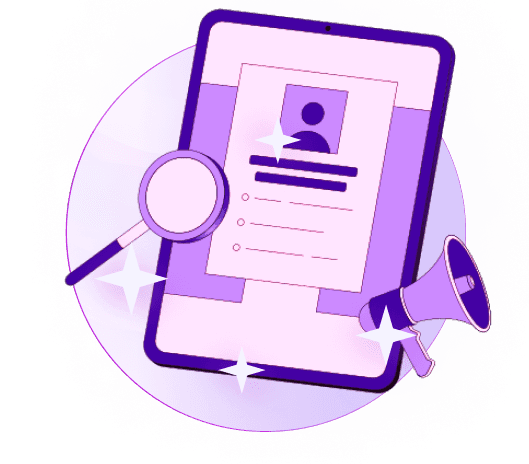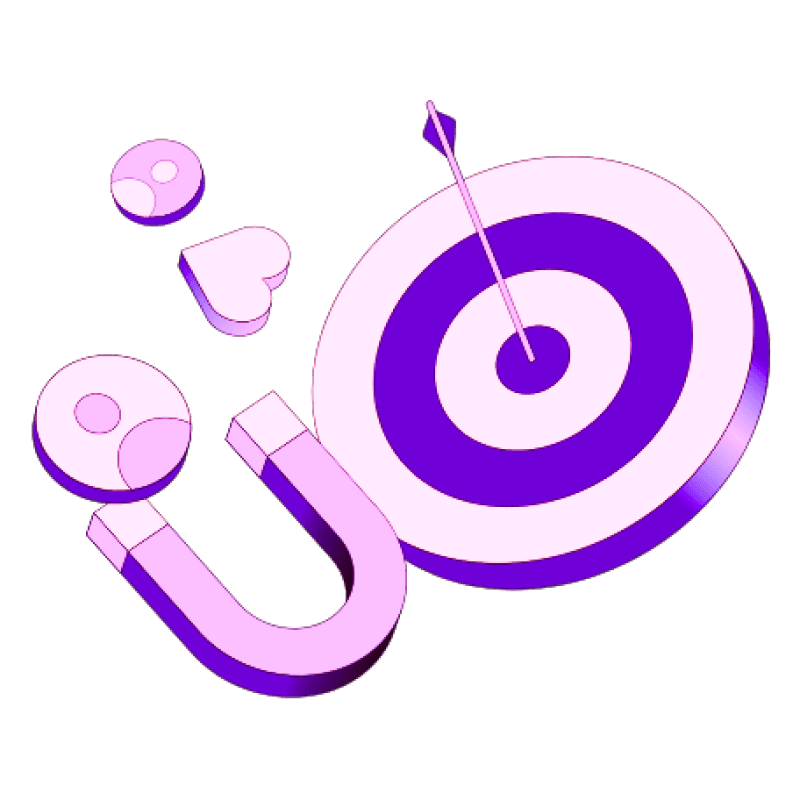Blogs
Articles

How to Create a Buyer Persona That Actually Works [Free Template Inside]
The numbers speak for themselves - marketers using buyer personas see 73% higher conversions than those who don't.
These results paint an impressive picture. Companies that create detailed buyer personas generate 24% more leads and achieve 36% shorter sales cycles. The data shows 96% of marketers agree that personalization makes buyers more likely to become repeat customers.
This piece walks you through the essentials of creating buyer personas that deliver results. You'll learn everything from basic concepts to building detailed profiles that fit your marketing strategy. We've added a free template so you can start right away.
What is a Buyer Persona and Why It Matters?
A buyer persona is a detailed profile of your ideal customer that we build from market research and real customer data. This semi-fictional character captures your target customers' characteristics, behaviors, motivations, and challenges.
Buyer personas are more sophisticated than generic marketing approaches. They go beyond simple demographics to include psychographics—your audience's activities, interests, and opinions that show their motivations. They also cover detailed information about your audience's goals, pain points, purchasing behaviors, and decision-making processes.
Your marketing strategy's success depends on buyer personas. They help create tailored content and marketing strategies that strike a chord with your audience. Organizations that use buyer personas see many benefits. These include better targeting, improved lead qualification, and exceptional customer experiences.
Buyer personas help you understand your customers deeply and tailor your message to their specific needs. This customization is vital since 96% of marketers confirm it makes customers more likely to buy again.
Difference between buyer personas and target audience
Target audiences identify broader groups with common characteristics. Buyer personas focus on specific individuals within these groups. Target audiences help you narrow down potential buyers to a manageable group. Buyer personas then break down that group further.
Target audiences are the foundation. Buyer personas add detailed architecture to guide your precise marketing efforts. Both elements create an effective marketing strategy but play different roles in understanding your customers.
What are the 4 types of buyer personas?
Your marketing success depends on understanding different types of buyer personas. Research shows four main buyer persona types that reflect how people make purchasing decisions.
The competitive buyer persona wants results and values expertise. These customers look for your unique advantages and qualifications. They make quick decisions and need proof that your product beats the competition.
The spontaneous buyer persona wants fast solutions and buys on impulse. Limited-time deals work well with them, and they don't need much information to make a purchase.
The humanistic buyer persona takes time to decide and connects emotionally with brands. They care about your company's values and want to build relationships with businesses they buy from.
The methodical buyer persona loves details and research. These analytical buyers make careful decisions based on logic. They need complete information and solid proof before they buy.
1. Conduct customer and market research
Customer data collection should be your first step. Your existing customer database, competitor analysis, and market trends will help you understand your audience. Look at demographics and other factors like lifestyle choices, values, and interests.
2. Use surveys, interviews, and analytics
Experts suggest about 20 customer interviews for each buyer persona to understand what drives their purchase decisions. Numbers from website analytics, social media data, and sales records will support your research findings.
3. Identify patterns and segment your audience
Your collected data will reveal similarities and differences among customers. Behavior patterns, challenges, and buying habits become clear when you analyze the information. Similar characteristics help group customers into distinct segments.
4. Build detailed persona profiles
Each segment needs a detailed profile. Names and faces make your personas feel real. Add demographics, goals, challenges, preferred ways to communicate, and buying behaviors to complete each profile.
Step-by-Step Guide to Creating Buyer Personas
Building effective buyer personas demands a methodical approach beyond simple assumptions. Let's delve into a practical process that delivers results.
Your research should start with multiple methods. A one-on-one interview with 5-10 existing customers or a survey of at least 20 people will uncover their motivations. Website analytics, social media insights, and competitive analysis combined create a detailed data foundation.
The findings need organization through patterns in age, location, life stage, income, and interests. These commonalities reveal distinct customer segments worth your attention.
Your next step builds detailed profiles from identified segments. Each persona needs a name and face for relatability - "Finance Fred" serves as a great example. He's a 40-something finance professional with a passion for adrenaline sports. Three key components make up each profile:
Personal demographic data
Professional information
Psychographic details like values and interests
The documentation should capture their roles, goals, and challenges. These elements are the foundations of effective marketing messaging.
Persana offers a quickest way to organize research and create detailed buyer personas.
Sales teams need preparation for conversations with these personas. Include actual quotes and potential objections they might raise. Note that markets and priorities evolve, so your personas need annual reviews.
Using Templates and Real Examples
Templates make it easier to create buyer personas by giving you a structure to organize your research into practical profiles. Here's how you can use them well.
What to include in a buyer persona template?
A complete buyer persona template has several key sections. You should start with demographic information about your ideal customer. The next step is to outline their motivations—what keeps them up at night and what they hope to achieve.
Your template should also capture:
Professional details like job title and industry
Pain points and challenges they face
Preferred communication channels
Buying behaviors and decision factors
Personal interests and values
The aim is to build an integrated profile that helps your team understand who you're targeting and why.
Free downloadable template overview
You'll find many resources offering customizable templates to start your persona development. HubSpot offers free templates that help organize your audience segments into practical profiles. These templates let you input research systematically and share findings across departments.
So, using a template saves you frm designing profiles from scratch, which lets you focus on gathering accurate customer data.
You can visit Persana for an easy-to-use template that simplifies persona creation through AI-powered insights.
Example: Duolingo's buyer persona strategy
Duolingo shows how personas work effectively through multi-channel communication. The language-learning app created unique personas for push notifications, each with distinct voice characteristics. Their individual-specific communication based on user behavior patterns and learning styles made a big difference.
This smart approach helped Duolingo increase engagement by making communications feel personal rather than generic—proof of what well-developed personas can achieve.
How to Apply and Maintain Your Personas?
Building buyer personas isn't something you do once and forget. You need constant updates to keep up with your changing audience. The best practice is to review them yearly.
Your organization needs to put these personas to good use. Teams should know how to work with them to stay focused and united. Your product development, customer service, and sales teams must understand them well. This helps everyone work toward common customer-focused goals.
The best way to use personas is to create content that tackles each persona's specific challenges and interests. On top of that, you can split your email campaigns by persona types to send messages that appeal to specific groups.
Automation tools help you target your marketing better—getting the right message to people at the right moment. Yes, it is important to keep track of how your campaigns perform through analytics that measure engagement, conversion rates, and ROI.
Markets change, and so do your customers' priorities. Update your personas when:
Your business goals take a new direction
You find new ways to reach customers
Your customers face different challenges
AI-driven analytics can help you gather immediate data from social media, customer feedback, and market trends. Check out Persana.ai to find AI tools that keep your personas fresh without spending hours on manual research.
Conclusion
Buyer personas stand as the most powerful tools in a marketer's arsenal. This piece shows how detailed customer profiles boost conversions, generate more leads and create shorter sales cycles. Research shows that 96% of marketers confirm individual-specific experiences help retain customers better.
Great buyer personas don't appear by chance. The process needs systematic research, thoughtful analysis and consistent updates. The four persona types we covered - competitive, spontaneous, humanistic, and methodical - create a framework that helps understand customer decision-making styles.
The step-by-step process gives you a clear path to develop your own personas. Our free template makes this task quick and manageable. Companies like Duolingo have showed remarkable results by using well-crafted personas in their marketing efforts.
These buyer personas need regular updates as markets evolve and customer priorities shift. Make persona development an ongoing practice instead of a one-time project.
FAQ
What is a persona example?
A good buyer persona brings your ideal customer to life with specific details. Here's an example from the B2B world: "John Smith, 36, Product Manager at a SaaS accountancy firm who doesn't deal very well with managing multiple stages of product development without centralized software." John's profile shows his frustrations (managing team workload across different systems), gains (oversight of all projects in one place), and buying factors (values free trials and ROI-based decisions). A B2C example might be "Steve Johnson, 25, a software engineer from Chicago earning $100,000 annually who frequently uses Instagram and values high-quality outdoor products."
What are the main points of buyer persona?
Every buyer persona that works needs these key elements:
Demographic information - age, location, income, education level
Professional details - job title, responsibilities, industry (especially for B2B)
Psychographic elements - values, goals, challenges, interests
Behavioral patterns - buying habits, communication priorities, online behavior
Pain points and frustrations - specific problems they want to solve
Decision-making factors - what shapes their buying process

Create Your Free Persana Account Today
Join 5000+ GTM leaders who are using Persana for their outbound needs.
How Persana increases your sales results
One of the most effective ways to ensure sales cycle consistency is by using AI-driven automation. A solution like Persana, and its AI SDR - Nia, helps you streamline significant parts of your sales process, including prospecting, outreach personalization, and follow-up.



